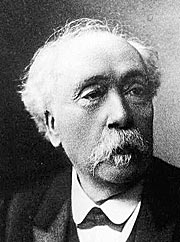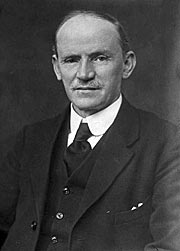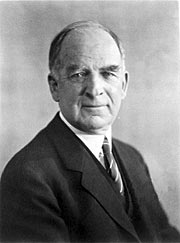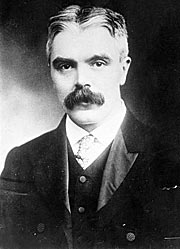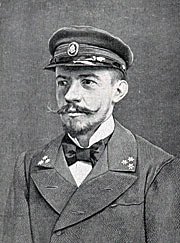- News
- Science
- Scientific Bodies
- Divisions
- Commissions
- Commission A1 Structure
- Commission A2 Structure
- Commission A3 Structure
- Commission A4 Structure
- Commission B1 Structure
- Commission B2 Structure
- Commission B3 Structure
- Commission B4 Structure
- Commission B5 Structure
- Commission B6 Structure
- Commission B7 Structure
- Commission C1 Structure
- Commission C2 Structure
- Commission C3 Structure
- Commission C4 Structure
- Commission C5 Structure
- Commission D1 Structure
- Commission E1 Structure
- Commission E2 Structure
- Commission E3 Structure
- Commission E4 Structure
- Commission F1 Structure
- Commission F2 Structure
- Commission F3 Structure
- Commission F4 Structure
- Commission G1 Structure
- Commission G2 Structure
- Commission G3 Structure
- Commission G4 Structure
- Commission G5 Structure
- Commission H1 Structure
- Commission H2 Structure
- Commission H3 Structure
- Commission H4 Structure
- Commission J1 Structure
- Commission J2 Structure
- Commission J3 Structure
- Commission X1 Structure
- Commission X2 Structure
- Past Commission Organising Committees
- Working Groups
- Centres
- Scientific Meetings
- Rules & Guidelines
- General Assemblies
- Meeting Proposals
- Future IAU Meetings
- General Assemblies
- EC Meetings
- Officers' Meetings
- Regional Meetings
- Symposia
- Focus Meetings
- Institutional Meetings
- IAU Offices Meetings
- IAU-Sponsored Meetings
- Letters of Intent submitted for 2024
- Letters of Intent submitted for 2023
- Letters of Intent submitted for 2022
- Letters of Intent submitted for 2021
- Letters of Intent submitted for 2020
- Past IAU Meetings
- Templates
- Other Meetings
- Grants & Prizes
- Scientific Bodies
- Publications
- IAU Publications
- IAU Strategic Plan
- Symposia
- WGSBN Bulletins
- Regional Meetings
- Information Bulletins/Catalyst
- E-Newsletters
- Focus Meetings
- Transactions A
- Transactions B
- Related Publications
- GA Newspapers
- CAPjournal
- IAU Books
- Brochures
- IAU Offices
- WG Reports
- Commission Reports
- Division Reports
- Past IAU Publications
- Rules, Guidelines and Instructions for Proceedings
- Publishers
- IAU Publications
- Administration
- About the IAU
- Statutes & Rules
- IAU Policies
- IAU Executive Bodies
- IAU Secretariat
- Resolutions
- Members Administration
- Administrative Dates & Deadlines
- International Organisations Relations
- Donate to the IAU
- Training in Astronomy
- Astronomy for Education
- Astronomy for Development
- Astronomy for the Public
- Office for Astronomy Outreach
- FAQ
- Themes
- Satellite Constellations
- Astronomy in Everyday Life
- How to Report a Discovery
- Careers in Astronomy
- Defining our Place in the Cosmos
- The Constellations
- Light Pollution
- Measuring the Universe
- Near Earth Objects
- How to Participate in Astronomy Research
- Naming of Astronomical Objects
- Naming of Exoplanets
- Buying Star Names
- Naming Stars
- Pluto and the Solar System
- IAU Member Statistics
- Our Moon: the Moon
- Meteors & Meteorites: The IAU Definitions of Meteor Terms
- UNESCO-IAU Portal to the Heritage of Astronomy
- Social Media
- Past Events
- Call for Online Resources
- Astronomy@Home Awards
- Contact
The Founding of the IAU and the First Executive Committee
The IAU was the result of a process that started long before World War I to encourage cooperation between astronomers all over the world, at that time primarily led by the American astronomer George Ellery Hale. However, the process took a different turn after the war — in which scientists from many of the former combatant states on both sides had actively participated. After the end of the WWI, only countries belonging to the victorious allied powers could be members of scientific unions — including the IAU.
In July 1919, one month after the Treaty of Versailles was signed, a Constitutive Assembly was held in Brussels with the goal of creating the International Research Council (IRC, which in 1931 became the International Council for Scientific Unions [ICSU]), and under its authority, a number of international scientific unions. Among these, the IAU was the first to be founded — therefore the official birth date of the IAU is 28 July, the day that the Statutes of the IRC were adopted.
At the same time two IAU subsidiaries were created which are still in operation today: the Bureau International de l'Heure, located in Paris, and the Central Bureau of Astronomical Telegrams, initially located in Copenhagen, and today in Harvard.
The first IAU member countries were Belgium, Canada, France, Italy, Great Britain, Greece, Japan, and the USA; all Allied powers.
More details are given in The History of the IAU, by past President Adrian Blaauw, Kluwer/Springer 1994.
The first Executive Committee
The first Executive Committee of the IAU was appointed by the IRC Constitutive Assembly. It consisted of the following members (with their respective nationalities, dates and institutions, followed by a brief vita, at the time of their term):
President: Benjamin Baillaud (1848–1934)
French
Observatoire de Paris
As a specialist in mathematics and celestial mechanics, Baillaud had been the Director of the Observatoire de Toulouse-Jolimont from 1878 to 1907. In 1906–1907, he selected the Pic-du-Midi science station — which was established in 1882 at a height 2877 metres above sea level — as the site for an astronomical dome to house a 50-centimetre reflector, which was a large-sized telescope by the standards of the time. In 1908 he became Director of the Paris Observatory, a position he held until 1926. He was the founder of the Bureau International de l'Heure, one of the two original IAU subsidiaries.
General Secretary: Alfred Fowler (1868–1940)
British
Imperial College London
Fowler was a world leader in the field of spectroscopy, demonstrating in particular that sunspots were cooler than the solar photosphere. Elected Fellow of the Royal Society in 1910, he became its President from 1919 to 1921. He also drafted the first statutes of the IAU.
Vice-President: Antonio Abetti (1846–1926)
Italian
Osservatorio Astronomico di Arcetri
Abetti contributed to positional astronomy and performed detailed observations of minor planets, comets and star occultations. In 1874 he was part of an expedition to India to observe a transit of Venus. Later he became the Director of the Arcetri Observatory, located in the outskirts of Florence, Italy.
Vice-President: William Wallace Campbell (1862–1938)
American
Lick Observatory
Campbell was another specialist in spectroscopy and he also focussed his work on the Sun. Having joined the Lick Observatory in 1891, he became its Director in 1901, a position he held until 1930.
Vice-President: Frank Watson Dyson (1868–1939)
British
Greenwich Observatory
Dyson was a spectroscopist and an expert on the spectrum of the corona and the chromosphere, who conducted several solar eclipse expeditions. He was appointed Astronomer Royal for Scotland in 1905, then Astronomer Royal in 1910 (until 1933). In 1910 he became director of the Royal Greenwich Observatory, a post he held until 1933.
Vice-President: Georges Lecointe (1869–1929)
Belgian
Uccle Observatory
Perhaps the most original character of the first Executive Committee, Georges Lecointe was not even an astronomer by training. He started as an artillery officer in the Belgian army. Then he graduated from the École Polytechnique — a military advanced school — in Paris, which allowed him an exceptional detachment to the French Navy in 1897, where he was given the rank of lieutenant-commander. In the same year he was attached to the Bureau des Longitudes, his first professional contact with astronomy. He became an expert in astronomical navigation, as well as in hydrography and geophysics. After many years at sea, he eventually became captain of the Belgica, the ship carrying a Belgian expedition to Antarctica, which, caught in pack ice, was the first to overwinter there from 1898 to 1899. Interestingly, one of his crewmembers was Roald Amundsen, who would later lead the first expedition to reach the South Pole on 14 December 1911.
Lecointe was appointed director of the astronomy service of the Uccle Observatory in 1901, to become its Director General in 1918. So Lecointe was, in a way, the first astronomer in Antarctica, and the distant predecessor of our colleagues now operating observatories on this continent (see IAU ann14031). A man of high international reputation and fame, it is in part through him that the Constitutive Assembly of the IRC, the cradle of the IAU, was organised in Brussels in 1919.
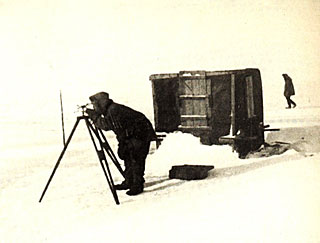
G. Lecointe, captain of the Belgica, making scientific observations in Antarctica (1898)
Credit: Creative Commons
